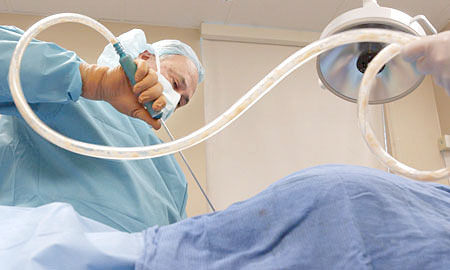Cold plunge and saunas have exploded in popularity, praised for boosting circulation, easing muscle tension, and enhancing recovery. For many, they provide an invigorating jolt of energy or deep relaxation. But for older adults, these extreme temperature experiences are not always harmless.
Aging changes the way the body responds to stress, and that includes thermal stress. The heart may not pump as efficiently, blood vessels may respond differently to heat or cold, and body temperature regulation may be slower. While some seniors can safely enjoy thermal therapy with medical approval, others face elevated health risks.
Knowing who should avoid cold plunges or saunas is essential for safety, whether the goal is recovery, relaxation, or wellness.
How Cold and Heat Affect the Body
Cold plunges and saunas both trigger rapid physiological changes. These are part of the reason they feel so stimulating, but also why they can be risky for older adults.
Cold Plunge Effects
-
Vasoconstriction – Blood vessels narrow to conserve core heat.
-
Blood pressure rise – Can be a significant spike for those with hypertension.
-
Adrenaline release – Increases heart rate and alertness.
Sauna Effects
-
Vasodilation – Blood vessels widen to release heat.
-
Increased heart rate – Mimics light to moderate exercise.
-
Fluid loss – Sweating can lead to dehydration.
For seniors, the shift between hot and cold can be especially challenging. Age-related changes in circulation, heart function, and hydration balance mean these reactions may be more pronounced and harder to recover from.
Health Conditions That Require Caution
Some common health issues in older adults make cold plunges or saunas more dangerous.
1. Cardiovascular Issues
-
High blood pressure – Cold may cause a dangerous spike; heat can drop blood pressure too quickly.
-
Heart disease – Increases workload on the heart during temperature stress.
-
Arrhythmias – Irregular heartbeat risk can rise with thermal stress.
2. Respiratory Problems
-
COPD – Heat may worsen breathlessness; cold may tighten airways.
-
Asthma – Sudden temperature changes can trigger attacks.
3. Neurological Concerns
-
Parkinson’s disease – Heat may worsen fatigue; cold may increase muscle stiffness.
-
Peripheral neuropathy – Less sensation means a higher risk of frostbite or burns.
-
Balance disorders – Increased fall risk when moving in and out of tubs or saunas.
4. Metabolic and Endocrine Disorders
-
Diabetes – Circulation and nerve issues increase risk.
-
Thyroid disorders – Can alter body temperature regulation.
5. Skin and Circulation Disorders
-
Raynaud’s disease – Cold can trigger severe vasospasms.
-
Poor circulation – Extremes can worsen discomfort or swelling.
-
Fragile skin or wounds – May slow healing or increase injury risk.
Situations Where Extra Care Is Needed
Even without chronic illness, older adults may face risks in specific situations:
-
Post-surgery recovery – The body is already healing.
-
Medication use – Beta-blockers, diuretics, or blood thinners can affect blood pressure and thermoregulation.
-
Dehydration risk – Common in older age, worsened by heat exposure.
-
Mobility limitations – Entering or exiting safely may be difficult.
For some, even a short sauna session or quick cold dip can cause dizziness, fainting, or an unexpected fall.
Safety Guidelines for Older Adults
If cleared by a healthcare provider, following these guidelines can reduce risk:
-
Seek medical clearance – Always get approval if you have any chronic health conditions.
-
Start gradually – Begin with shorter sessions and moderate temperatures.
-
Hydrate well – Drink before and after sessions to prevent dehydration.
-
Avoid rapid temperature changes – Allow the body time to adjust between hot and cold.
-
Have support nearby – A family member or friend should be present in case of trouble.
-
Know your limits – Stop at the first sign of discomfort.
Recognizing Warning Signs During Use
Older adults should stop immediately and seek help if they notice:
-
Dizziness or lightheadedness.
-
Chest pain or irregular heartbeat.
-
Difficulty breathing.
-
Severe shivering after a cold plunge.
-
Extreme fatigue, confusion, or feeling faint.
These symptoms could indicate that the body is under too much stress.
Alternative Wellness Options for Seniors
If cold plunges or saunas aren’t safe, gentler options can still provide many of the same benefits:
-
Warm baths or foot soaks – Mild heat improves circulation without overloading the heart.
-
Contrast showers – Alternating warm and cool water is less intense than full immersion.
-
Infrared saunas – Lower operating temperatures with relaxing effects.
-
Guided hydrotherapy – Professional supervision in controlled water temperatures.
These alternatives allow for relaxation and circulation support without the extreme temperature swings.
Why Risk Awareness Matters
Cold plunge tubs and portable saunas are easier to access than ever, and social media often portrays them as universally beneficial. But age-related health changes mean what’s safe for a 30-year-old athlete may not be safe for a 70-year-old retiree.
Being aware of potential dangers helps older adults make informed choices. By tailoring wellness practices to individual health needs, seniors can stay safe while still enjoying restorative activities.
Key Takeaways
-
Cold plunges and saunas put stress on the cardiovascular, respiratory, and nervous systems — effects are often more intense in seniors.
-
Conditions like heart disease, high blood pressure, COPD, Parkinson’s, diabetes, and poor circulation are key risk factors.
-
Safe participation requires medical clearance, gradual adaptation, hydration, and close monitoring.
-
Gentler thermal therapies can provide similar benefits with fewer risks.
Knowing who should avoid cold plunges or saunas — and why — is a crucial step in creating a safe, effective wellness routine in later life.
FAQ: Cold Plunges & Sauna Safety for Seniors
1. Is cold plunge therapy safe for seniors?
It can be safe for healthy older adults with medical approval, but those with heart, lung, or circulation problems should avoid it.
2. Can seniors use saunas daily?
Daily use may be fine for some, but shorter, lower-heat sessions are safest, especially for those with chronic health conditions.
3. Who should not do contrast therapy (hot/cold)?
People with cardiovascular disease, uncontrolled high blood pressure, or poor circulation should avoid sudden hot-cold transitions.
4. What’s the safest alternative to cold plunges or saunas for seniors?
Warm baths, infrared saunas, and contrast showers offer gentler, controlled benefits.
5. What warning signs mean I should stop?
Stop immediately if you experience dizziness, chest pain, shortness of breath, confusion, or severe shivering.
References
-
Mayo Clinic – Sauna: Health benefits and risks
https://www.mayoclinic.org/healthy-lifestyle/sauna/expert-answers/sauna-health-benefits/faq-20057826 -
Harvard Health Publishing – The health benefits of saunas
https://www.health.harvard.edu/heart-health/the-health-benefits-of-saunas -
Cleveland Clinic – Cold water immersion therapy
https://health.clevelandclinic.org/cold-water-immersion-therapy-benefits-and-risks/ -
American Heart Association – Hot and cold therapy: What’s safe for your heart?
https://www.heart.org/en/healthy-living/fitness/fitness-basics/hot-and-cold-therapy-whats-safe-for-your-heart -
National Institutes of Health (NIH) – Cold exposure and cardiovascular function in older adults
https://pubmed.ncbi.nlm.nih.gov/28450406/ -
National Institute on Aging – Safety tips for older adults and exercise
https://www.nia.nih.gov/health/exercise-physical-activity -
European Journal of Applied Physiology – Cardiovascular and metabolic responses to sauna bathing in healthy adults
https://link.springer.com/article/10.1007/s00421-018-3990-0




